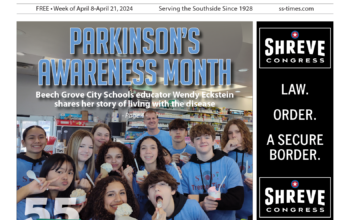Topics is a course at Southport High School taught by Kevin Sanders that analyzes major events from United States and world history through Hollywood films that attempt to portray those events. Students investigate historical documents and other sources to determine if a film is historically accurate.
The goal is for students to develop deeper understandings of the historical discipline while generating questions about the way the world is around them, along with watching classical films that have graced American and international screens.
Student: Jonathan Silguero
Film Reviewed: Apollo 13
I believe Apollo 13 is phenomenal because it is a wonderful, accurate movie that is based on the 13th mission to the moon from NASA after the space race ended with Neil Armstrong landing on the moon in Apollo 11. This mission was to land back on the moon to do more data, but not many people expected the event to happen since it is quite a coincidence that the 13th mission was shown to be a bad omen. In this movie, director Ron Howard showed and mentioned this bad omen. He has shown many scenes of foreshadowing and nightmares, mostly from Marilyn Lovell, of how the mission came to worse. Even though it might not have actually happened to the real Marilyn Lovell, the actual sources have been shown and credited in the start of the film, where they base this incident from a book called “Lost Moon: The Perilous Voyage of Apollo 13” by one of the astronauts from the incident, Jim Lovell. This source is a critical use for this movie to tell the story of Jim Lovell, played by Tom Hanks, and his dream of going to the moon after seeing the historical moment of Neil Armstrong walking on the moon.
This movie has shown to use the most amazing historical accuracy on showing how the incident happened in the movie and comparing it to the real one. Here, in the event of the explosion, a coil was damaged and released fuel when they were stirring the oxygen tanks, causing an explosion on one of the tanks and later another on the same command module. Here, we hear Jim Lovell say his famous quote, “Houston we have a problem,” right to Mission Control. Many elements were leaking out of the open panel, and they had to act quickly to conserve their battery and move themselves to the lunar module. They quickly have to use the lunar battery but not much of it since it is not a fuel cell and has a limited amount of power. As that solves their problem to not lose a lot of power, NASA quickly alerts many new networks to spread this information around the world. As this keeps escalating many members from Mission Control have their share of how to get the astronauts back to Earth. Many agreed on bringing them back on the free return trajectory, which is using the moon gravity and slinging them back to Earth. Others said they should use all of their power and return quickly to Earth but that is risky since one wrong move could end them up in the vacuum of space. They decided that the free return trajectory was the best option.
I compared the sources I found from the NASA website and some old CBS News. Both sources said the same thing on how the explosion happened and what they could do to bring them back to Earth. With that book from Jim Lovell as the primary source to use in this movie and the thoughts of director Ron Howard imagining what he wanted to give this movie gives the most historically accurate movie I have ever seen. He is giving us a one-on-one visual retelling of the whole book coming from one person who is giving us a personal experience of the event but also trying to give us a secondary source that gives more from another perspective.
I would highly recommend watching this movie.

